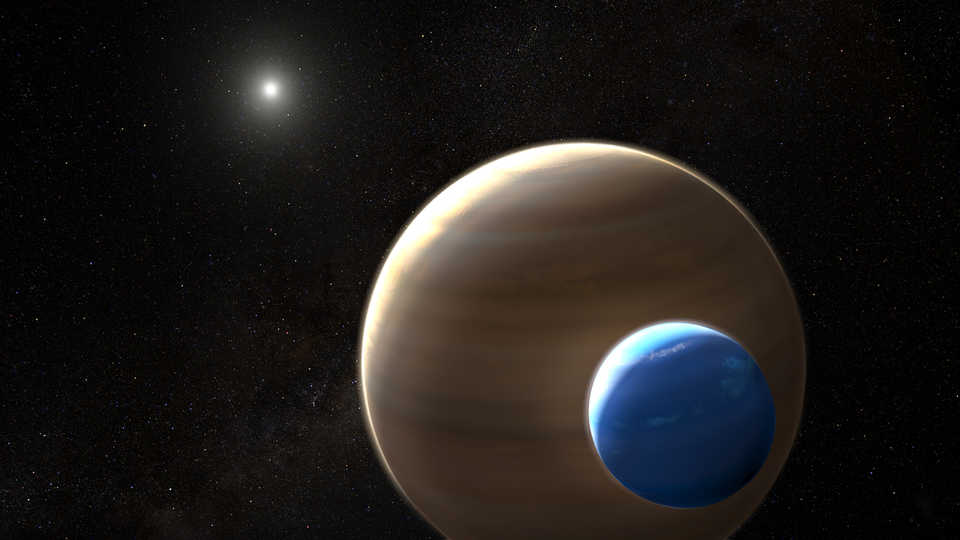Universe Update
First Evidence of Exomoons

The search continues for exoplanets (3,791 and counting) and life beyond Earth (0 and counting). But some astronomers have pushed the envelope further, mulling over the possibilities of life on moons in faraway solar systems. After all, if there are planets around other stars, why shouldn’t there be moons around such planets as well? And if Ewoks can make a moon their home, why not life in our Universe as well?
The billion-dollar question: How?
To find an exoplanet (a planet around a star other than our sun), astronomers watch the light from faraway stars. They detect the (typically miniscule) drop in a star’s brightness as a planet passes in front of it; this technique is called the transit method. It’s akin to watching a car headlight miles away and trying to see the slight dimness of a housefly passing in front of it. It sounds fantastic, even unbelievable, but over three-quarters of currently detected exoplanets have been found this way.
Finding an exomoon (a moon around a planet around a star other than our sun) is another level of difficulty. They are even smaller and harder to detect than exoplanets. In our housefly-headlight analogy, it would be similar to trying to detect a tiny grain of sand near a headlight miles away.
The concept has remained the stuff of imagination—until now! Columbia University astronomers may have detected the first ever exomoon. Alex Teachey and David Kipping combed through Kepler data for hundreds of exoplanet detections, and one record stuck out. The data indicated that the star Kepler 1625 (8,000 light years away) had dimmed once (from Kepler 1625b, a Jupiter-sized planet passing by), suggesting the presence of an exoplanet. But curiously, it had also dimmed again within a day—for a similar amount of time.
It was strange. Strange enough to raise some confusion. First, it couldn’t be the same planet; there wouldn’t have been enough time for the planet to loop around in a matter of hours. (A single orbit should be around 287 days.) Second, it probably wasn’t a second planet. (Another planet traveling at the same speed as Kepler 1625b would share its orbit and likely collide with it; a planet in a different orbit would travel faster or slower than Kepler 1625b.) Then, finally, could this be an object trailing just behind the planet? Maybe this was an exomoon!
Spurred on by their curious finding, Teachey and Kipping used the Hubble Space Telescope to observe another transit of Kepler 1625b. While the data seemed to suggest the presence of an exomoon, with only a single observation it may have been an error or a coincidence. If their hypothesis was correct, it should happen almost every time. During the next transit the star dimmed once, then twice, as it had in the previous Kepler data. Here is a great video showing the transit they may have detected, from our friends at Hubble ESA.
The strangeness continues. Both the exoplanet Kepler 1625b and its potential moon Kepler 1625b-i lie in the habitable zone of their star. Unfortunately, given their size, both of these worlds are likely gassy, and not suitable for actual life: the exoplanet is around the size of Jupiter—possibly bigger. And the potential moon is no runt either; it appears to be four times the diameter of the Earth, similar in size to Neptune.
Teachey and Kipping cautiously conclude: “It is difficult to assign a precise probability to the reality of Kepler-1625b-i. [...] These reservations exist because this would be a first-of-its-kind detection—the first exomoon.”
They, among many others, are looking forward to the 2021 launch of the James Webb Space Telescope (JWST), which will provide the accuracy to confirm Kepler 1625b’s moon—and other candidate exomoons yet to be discovered.